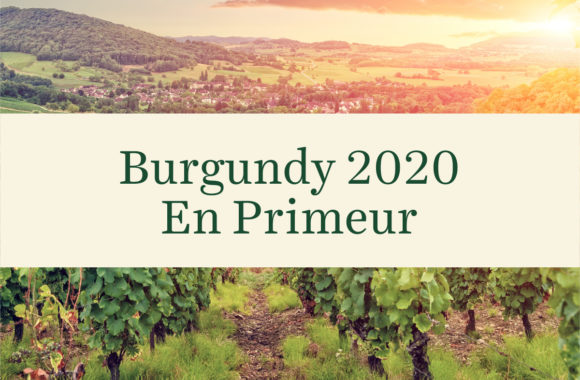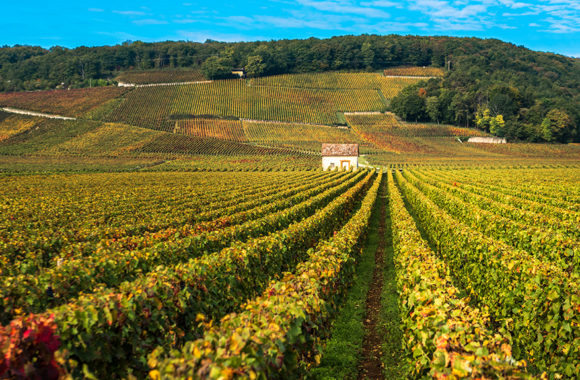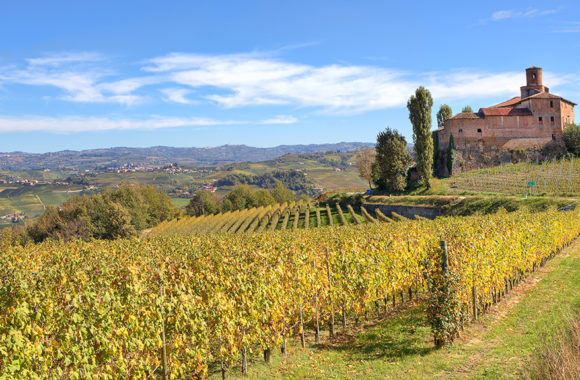
2018 Bordeaux: The Goldilocks vintage
· Martin Tickle Martin Tickle on
“Not too little, not too much…just right.”
The global wine-trade descends upon Bordeaux every April, armed with the familiar cliché, “Can you compare this to another vintage?” 2018 is a unique vintage, Bordeaux has rarely, if ever, seen such extremes of cold and rain during the first half of the year, followed by a seemingly endless summer and idyllic autumn.
In a region so often defined by the weather, particularly during harvest, the playing field this year is relatively even. Conditions were largely similar for each appellation throughout the year, bar the unlucky few who were touched by hail in May. It’s a vintage of belief and philosophy, particularly for those practicing organic and/or biodynamic viticulture. The mildew pressure caused them catastrophic loss during flowering, with Ch. Palmer and Ch. Pontet-Canet losing approximately three quarters of their crops.
For those who arrived at the business end of the season with their grapes intact, they were presented with the rare opportunity to craft a wine according to their exact specifications. With so much potential in the grapes, there was the risk of harvesting too early and sacrificing maturity in search of freshness, or to work the wines too hard in the cellar and bruise the wines with brutish tannins.
At best, these wines are bespoke, the chateaux who know their terroirs intimately have been able to craft wines of rare precision, verve, and complexity. Freed from the worries of weather at harvest time, individual plots were picked at the perfect points, and the resulting wines have been coaxed into barrel with gentle hands and sympathetic techniques. We’ve heard Bordeaux described as ‘The Silicon Valley’ of the winemaking world, and at its best in this vintage Bordeaux is leading the world in terms of technology of winemaking and the quality that is translated into the bottle. Nowhere else in the world can make fine wine of this quality on this scale. Many of our favourite producers have got things just right, and in a vintage like 2018 that makes for plenty to get excited about.
The 2018 growing season in brief
A very wet start, with some of the highest levels of winter rainfall since 2000.
Cold and wet conditions led to delayed budbreak in early April, with high levels of mildew pressure during flowering and through to mid-July.
Spring frosts at the end of May, most problematic in the southern Medoc and the northern Right Bank.
A hot and sunny summer, second only to 2005. Average temperature of 29C during July and August, with practically no rainfall.
Excellent conditions for ripening, and a relatively early harvest from mid-September to mid-October. Perfect conditions enabled chateau to pick at their preferred moment with no weather pressure.
Small berries, with thick skins and relatively little juice. High phenolics, full-flavoured and tannic. Relatively high potential alcohol and moderate acidity.
The wines
A sunny, dry vintage from July onwards, but with so much rain during the first half of the year the vines were able to cope. The best terroirs act like sponge, drawing water in and releasing it when needed. Fruit has fully ripened, but often without too much of the exotic characters of vintages like 2003, 2009, and 2015.
The work in the vineyard during the season, and the dates of picking are key to making the most of the potential quality of the grapes. Bordeaux’s maritime climate often makes harvest a fraught affair, with the vigneron gambling against the weather in the pursuit of ripeness. The fine weather during end of summer and Autumn enabled chateaux to pick over a broad window. The best wines are those where individual plots have been picked at their ideal ripeness, often over a period of three weeks or more.
Once the grapes were safely ensconced in the winery, the key phrase for the vintage is lightness of touch. With so much potential in the grapes in terms of sugar, potential alcohol, and tannins, it was vitally important that they were not worked too hard. Extractions were undertaken as gently as possible, often with shorter maceration times, and with minimal pigeage and remontage.
St. Estephe
We had high hopes for St. Estephe, our gut-feeling was that the clay soils of the northernmost outpost of the Medoc would have excelled in 2018, and we were not disappointed. The appellation is led by the Three Muskateers of Calon-Segur, Cos d’Estournel, and Montrose. Our team were split on their favourite, be it the Athos of Calon, the Aramis of Cos, or the Porthos of Montrose. What is clear is that these will be three wines for the ages. Ormes de Pez from the team at Lynch-Bages have followed their 2016 with another very strong vintage. One of our strongest quality/value picks is Lafon-Rochet, Basile Tesseron and his team have made what is potentially their best vintage to date.
Pauillac
The giant of the Medoc is imperious in 2018, with its three First Growths all on the kind of form that results in an ineffable dusting of magic in the best vintages. So often reticent in its early stages, Lafite’s quality could not be restrained, whilst Mouton was firing on all cylinders, showing the qualities that bestowed them with a clutch of perfect 100 point scores in 2016. We won’t see Latour 2018 for quite a few years yet, but it’s a belter. Lynch-Bages, Pichon Baron, and Pichon Lalande have all crafted wines that can give the First Growths a run for their money. It’s tempting to dismiss value as an oxymoron in Pauillac, but Grand Puy Lacoste and Pedesclaux both beautifully illustrate how strong the old and the new schools are in 2018.
Margaux
Margaux’s eponymous First Growth is on breath-taking form, their relentless pursuit of quality sees only 36% of their production making it into the Grand Vin in 2018. It’s a wine that tastes more of Ch. Margaux than of the vintage, which is particularly impressive in such a solar year. Rauzan-Segla is on a remarkable hot streak of vintages since 2015, and their 2018 may be the best wine of that illustrious quartet. Brane-Cantenac have also bounced back with a sleek and silky 2018 that is amongst the most refined wines of the vintage. Palmer will unfortunately be difficult to come by due to the ravages of mildew early in the season, but their unprecedented low yields have resulted in a wine of immense depth and brooding concentration. Ch. D’Issan was another firm favourite amongst the Jeroboams’ team, likely to compete with du Tertre as our quality/value pick from Margaux.
St.Julien
Consistency in St. Julien is aided by its relatively small scale and the collaborative approach of the appellation to viticulture. When it’s good, it tends to be very good. Spoiler alert: It’s very good indeed in 2018. The charge is led by an outstanding Leoville Las-Cases, which is knocking on the door of the First Growths. We were blown away by the quality at Leoville-Poyferre, and Leoville-Barton is almost equally as good.
Pessac-Leognan & Graves
Haut-Brion is unsurprisingly the star of the show, beautifully balanced and mineral-soaked, revealing the full potential of its terroir and gripping persistently on the finish. There is plenty to enjoy across the appellation, and hopefully at prices that represent particularly good value in the context of the vintage. Pape-Clement have further refined and dialled back their style, producing a wine that won’t immediately seduce with charm, but will be sure to age gracefully in the cellar. Smith-Haut-Lafitte is on rather more flamboyant form, and our favourite wine of the appellation is a joyous Domaine de Chevalier that punches well above its weight. In a more difficult vintage for the dry white wines, it’s best to stick to the classics – Pape Clement Blanc, Smith-Haut-Lafite Blanc, and Domaine de Chevalier Blanc are all worthy of a place in the cellar.
Pomerol
It would probably be quicker to list what isn’t good in Pomerol on 2018, last Wednesday was one of the best days of tasting we can remember. From Le Pin to VCC, via Lafleur, L’Eglise Clinet and La Conseillante, these are all wines that we’d love to have in the cellar. Clinet and a re-vitalised Beaureguard are likely to be the quality/value picks of Pomerol.
St. Emilion
We approached St. Emilion somewhat tentatively, wondering how the most inconsistent of appellations with have coped with the potential alcohol levels and the temptation to over-extract. Happily, many of the wines are a revelation, with the biggest shock going to Grand Cru Classe “A” Angelus. Beautifully pared back, less oak, and a much fresher style, it’s a beautiful wine in 2018. The unanimous favourite of the team was Figeac, once again displaying the kind of form that should hopefully make it a shoe in for promotion to the “A” team in 2022. The final word must go to Ausone, whose 2018 is the kind of sky-scraping monument that stops you in your tracks and renders tasting notes irrelevant. It’s brilliant.
Sauternes
As is so often the case in the best red vintages, conditions were more challenging in Sauternes. For those who survived the twin attacks of mildew and hail, there was a huge gap between the physical ripeness of the grapes towards the end of August and the actual onset of botrytis mid-October. Low acids can be a concern, but the best wines are showing a lovely fresh fruit sweetness that is very appealing. We particularly enjoyed Coutet and Suduiraut, which would be our two picks for the cellar.
Other appellations
We had a sneaking suspicion that some of the top clay terroirs of the northern Medoc would produce something special in this vintage, and we were proved right with Ch. Potensac and Ch. Chasse-Spleen. Both have produced potentially their best ever wines and are a must have in bottles and large formats. On the Right Bank, the satellite wines of Denis Durantou are on their usual fine form, and we were delighted by the quality of Lalande-de-Pomerol’s Bel-Air at our tasting with Edouard Moueix. Tasting at Lafleur is always the highlight of any Primeur week, and their Fronsac property Grand Village has bounced back from frost last year with wines that seem to have found an extra gear.
What happens next
We expect the campaign to start relatively quickly, and it is likely that the wines of Sauternes and many of the Petits Chateaux will be released in April. May typically sees a more sporadic release schedule, largely due to the assemblage of French public holidays and the Bordeaux wine fair Vinexpo. It is likely that the peak of the campaign will occur in the last two weeks of May and perhaps into the first week of June.







